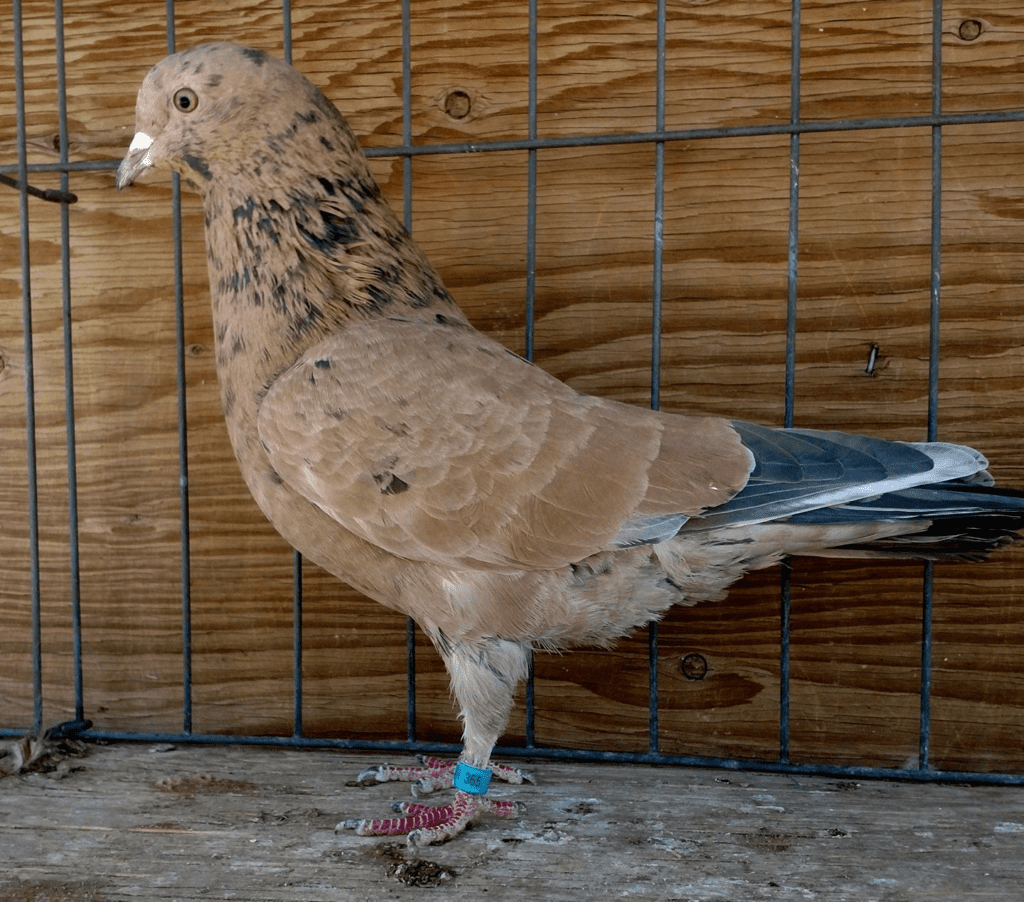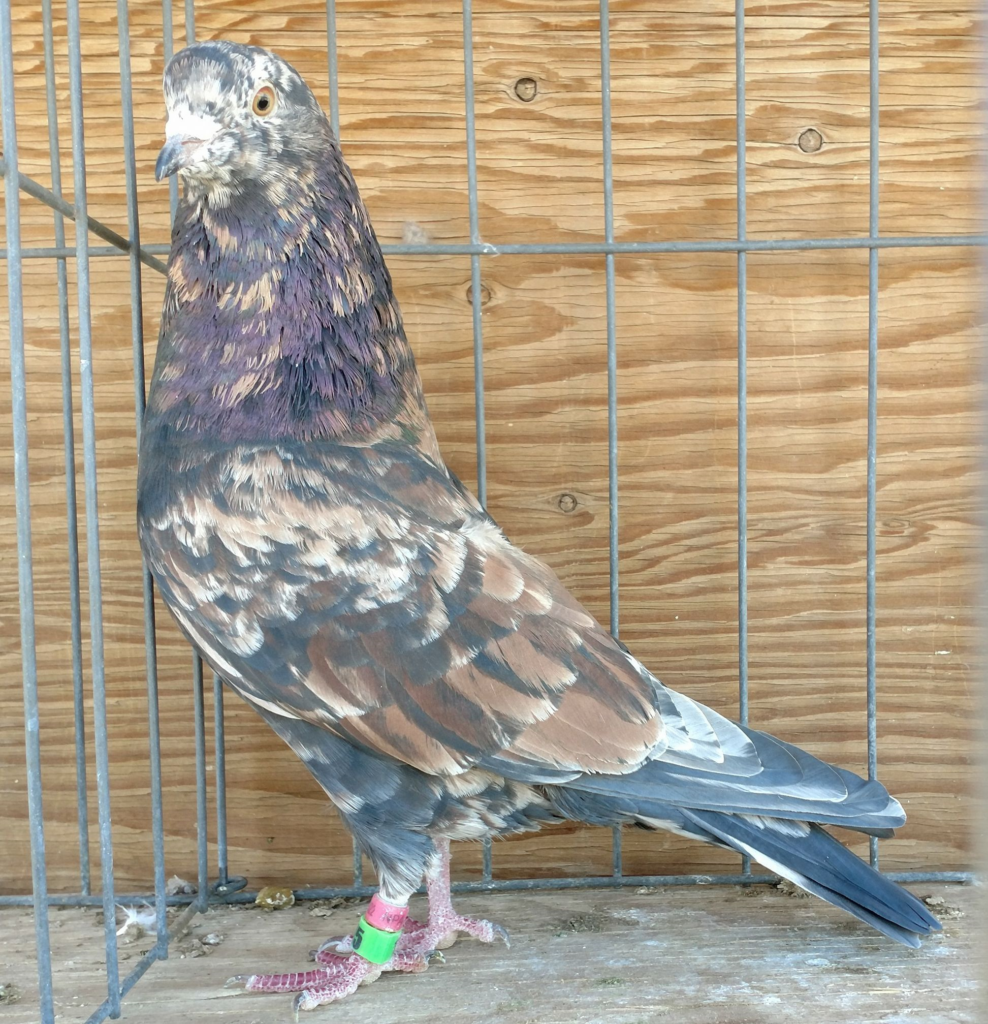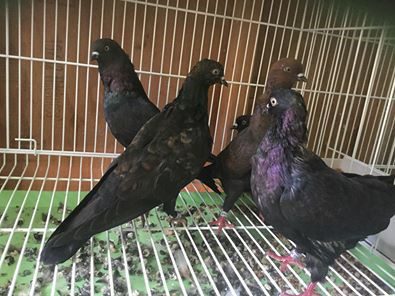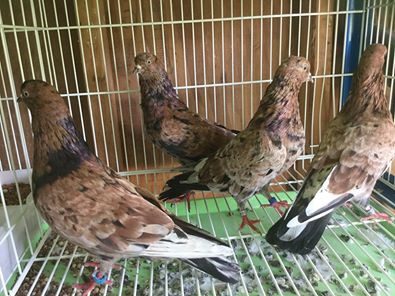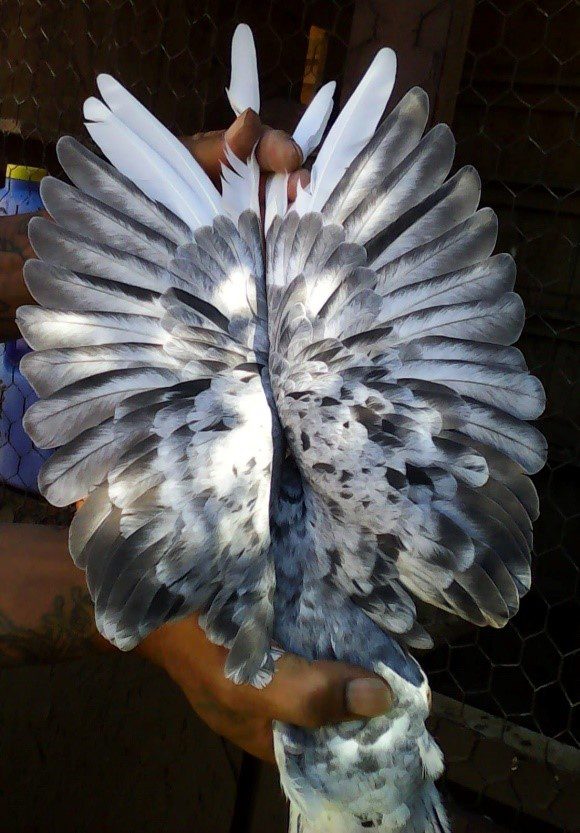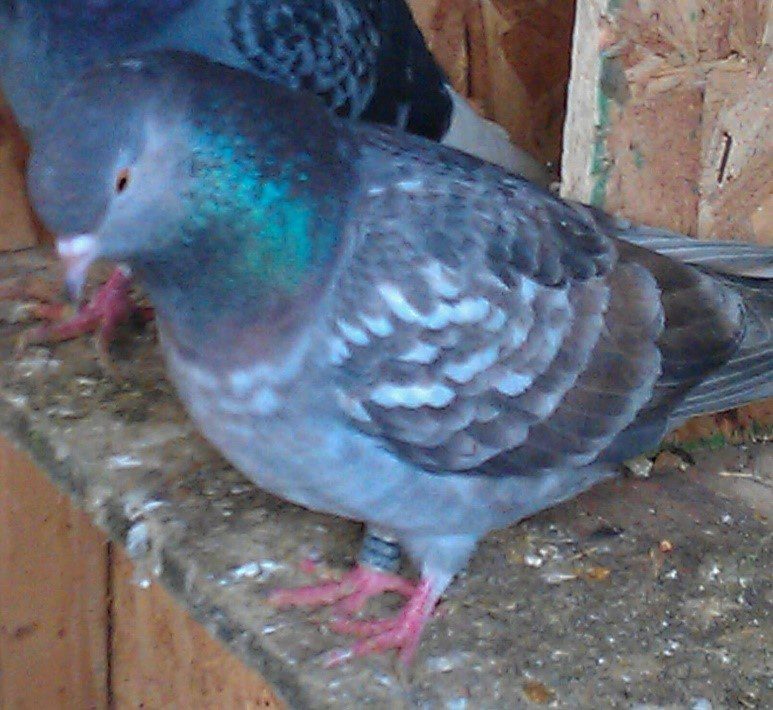The following text is from Frank Mosca. Pictures above are from J.P. Isom.
Step 1:
Almond is a dominant, sex-linked, depigmenting mutation — or change from the wild-type condition of the pigeon, (Columba livia). Beside the depigmentation, it does other things, too, and has many alleles (alternatives), but let’s not worry about those for now. The only other thing that we’re going to worry about here is that almond youngsters are born short-downed.
The fact that almond is a depigmenting mutation means that it cuts the amount of pigment (coloring material) put into the feathers of the growing bird. It does this so well that a bird, which would normally feather out as a blue bar in its nest plumage instead tends to be almost whitish.
As the bird ages, the mutation seems to turn itself off or to change back to the wild-type condition in certain areas. In those areas, the pigment production turns back on again and the new feathers produced in that area are colored normally. This colored feathers in these areas of turned on again pigment production are known as the “break”. As the bird ages, more and more sections are turned on to pigment production so old almonds may occasionally look to be normal-colored birds without the almond factor.
STEP 2:
One of the biggest sources of confusion about almond is the usage of the word. There is both the pigeon jargon meaning and the genetics meaning. Much of the anger expended in suggested standard changes is merely the result of the first person using one definition and the second person using another.
If used in its genetics sense, almond refers to Step-1 above. In that case, almond is merely one of many known mutations in the common pigeon. It is a mutation that can be added to any bird of any breed. It makes no difference what the gene pool of that bird or breed is. Almond can be attached to it. Whether or not almond would be an esthetic addition to that breed is not considered. You could add almond to white Swiss Mondains, but why would you want to?
In pigeon jargon, at least as used in English speaking countries, almond refers to almond’s phenotype in combination with specific other mutations in a particular breed milieu, that of the English Shortface Tumbler (ESF). This is due to historical accident and the fact that breeders of these birds named the color itself. If used in that manner, it refers to a T-pattern check, heterozygous recessive red, kite bronze, almond pigeon. There may be other factors present as well, but that’s what pigeon jargon refers to as “almond.”
By no means is this the only way almond is found in ancient breeds. The Danish Stippers, the Italian Magnani Modenas, the Oriental Rollers, etc., are all breeds in which almond has been known for centuries. They are also breeds that allow other expressions of almond than are found in the ESF. Many of these expressions, while vastly different, are as beautiful as those found in the ESF.
Step 3:
Almond may be added to any of the pigeon’s base pigments. These pigments are brown, wild-type (blue-black), and red. You can have a brown bar almond, a blue bar almond, an ash-red bar almond. Similarly, you can have a bluecheck almond, an ash-red T-pattern almond, or brown barless almond. Almond is hidden by some factors, but also interacts with many others and still shows itself.
One factor that prevents almond from showing itself is recessive white. A recessive white almond will simply look white – it will however be born with short down. – (As will dilute whites and a few other factored whites, so don’t jump to the conclusion that you have almond in your white family just because you saw a short-downed bird — though you may have.) Young bred from such an almond white paired to a non-recessive white carrying bird will exhibit the almond expression. They will also follow the rules for sex-linkage as far as almond.
Recessive red hides many things such as spread, pattern and color. However, it only partially covers almond. Recessive red almonds in the blue series are easily distinguishable. We call them DeRoys. The recessive red color is washed down a few tones and flecking in a deeper red occurs as the bird ages. You can also have recessive red almonds in the ash-red series, or recessive red almonds in the brown series. So far as I’m aware, there are no fancier terms for these colors.
Almond interacts with spread. A spread almond in the blue series is a gray-white bird with black flecking appearing as the bird ages. Notice the color of the flecks? In this case, they’re black because the bird under that almond overcoat is actually a black bird. If it were a spread brown almond, the flecking would be brown.
Almond’s expression then, i.e., what it looks like on the bird, is dependent on what else is in the bird. You can also add other factors as well and get something like the Bokhara above: Indigo, Almond, wild-type.
To recapitulate:
Step 1: Almond is a sex-linked depigmenting mutation.
Step 2: Pigeon breeders use the word almond in two ways: genetics meaning and fanciers’ meaning.
Step 3: Almond can be added to any bird or breed. Its expression in that bird or breed is determined by other factors present there also.
Addendum:
Almond is a sex-linked dominant mutation. That means:
- Any almond hen X any non-almond cock will give ALL almond sons and ALL non-almond daughters.
- A heterozygous almond cock (which is most almonds in the world) X non-almond hen gives about 50% almond cocks and hens and about 50% non-almond cocks and hens.
- A homozygous almond cock (not recommended in most cases) X non-almond hen gives 100% almond young of both sexes..
When I raised the question of keeping the almond look “good”, I received a number of different answers. Here are what appear to be the three prominent thoughts on keeping quality almond.
- Mate to a kite with strong bronzing.
- Mate to a black
- Jim Johnson wrote: Use blue check self’s. Or dark blue checks. Off the almond matings from the blue checks you will get some blue checks with the bronzing…..those are what you use back to almonds for the better colored ones. They are not weak. Almond is a dominant factor.
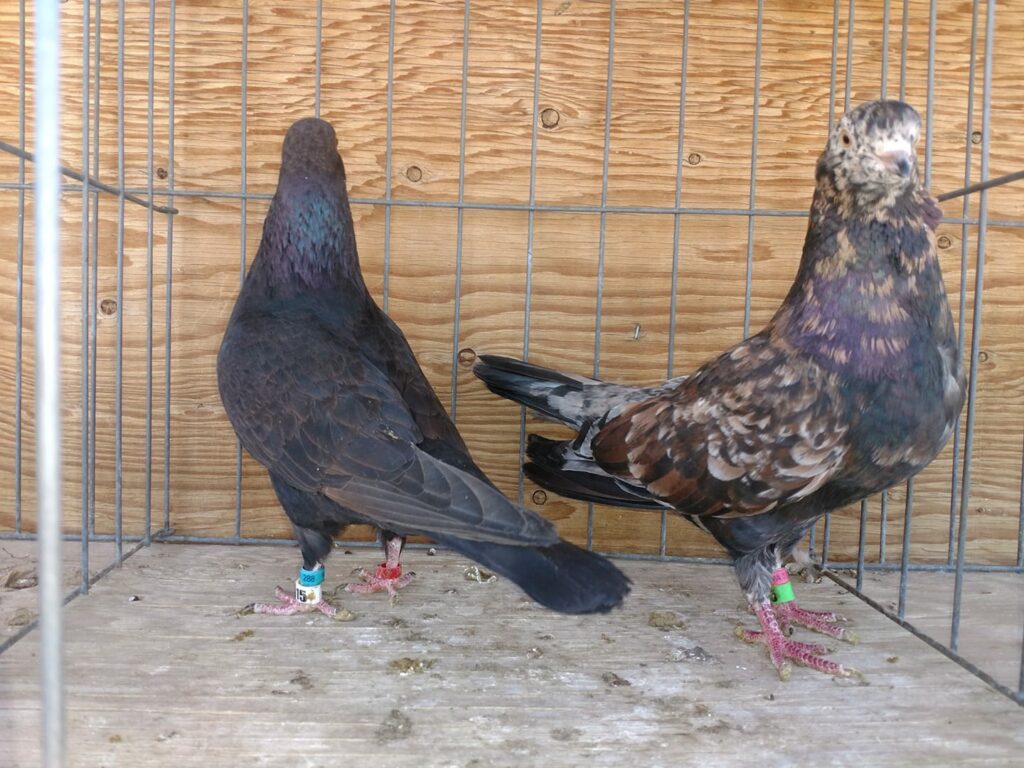
Here was see a picture from John Isom. The bird on the left is the kite colored bird needed to keep the almond color on the right.
Link Martin provided this picture of his kites and almonds.
And Stanley Pryor provided these pictures of an almond and kite with a different color base than the black and red most breeders use.


